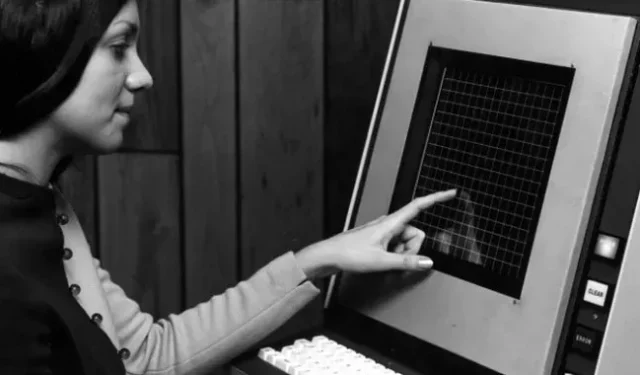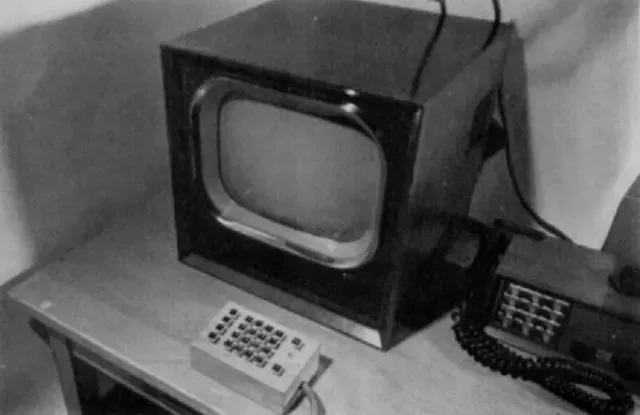PLATO: How the Educational Computer System of the 60s Shaped the Future

Bright graphics, touch screen, speech synthesizer, messaging apps, games and educational programs – no, this is not your child’s iPad. It’s the mid 1970s and you’re using PLATO.
Far from its comparatively primitive teletype and punch card contemporaries, PLATO was completely different. If you were lucky enough to be near the University of Illinois at Urbana-Champaign (UIUC) about half a century ago, you might have a chance to build the future. Many of the computing innovations that we consider commonplace started with this system, and even today, some of PLATO’s capabilities have never been exactly replicated. Today, we take a look back at this influential technology testbed and see how you can experience it now.
From space race to space war
Don Bitzer was a graduate student in electrical engineering at UIUC in 1959, but his attention was turned to more important things than circuits. “I read projections that said 50 percent of students coming out of our high schools were functionally illiterate,” he later told Wired . “We had a physicist in our lab, Chalmers Sherwin, who was not afraid to ask big questions. He once asked, “Why can’t we use computers for teaching?”
The system should be, in Sherwin’s words, “a book with feedback.”
The question was timely. Higher education faced a massive influx of students, and as the Soviets apparently won the space race with the launch of Sputnik in 1957, science and technology immediately became a national priority. “Automated learning”, as it was conceived, aroused interest in both academia and the military. Sherwin approached William Everett, dean of the School of Engineering, who recommended fellow physicist Daniel Alpert, head of the Control Systems Laboratory, to assemble a group of engineers, educators, mathematicians, and psychologists to study the concept. But the group ran into a major hurdle: members who could teach could not understand the potential required technologies, and vice versa.
Alpert was exhausted after weeks of fruitless discussions and was about to close the committee, until he got into an offhand discussion with Bitzer, who stated that he was already “thinking about ways to use old radar equipment as part of an interface for training with a computer.”Using US Army Signal Corps grant funding, Alpert gave him two weeks and Bitzer got to work.
For the actual processing, Bitzer used the university’s pre-existing ILLIAC I computer (then simply “ILLIAC”). It was the first computer built and wholly owned by an educational institution and was a copy of the slightly earlier ORDVAC. Both were built in 1952 and had full software compatibility. 2,718 IIIIAC vacuum tubes gave it more processing power than even Bell Labs in 1956, with a 75 microsecond addition time and an average multiplication time of 700 microseconds, 1,024 40-bit words of memory, and a 10,240-word magnetic drum. Bitzer worked with programmer Peter Braunfeld to develop the software.

The front was a consumer television connected to a self-supporting storage tube display and a small keyboard originally used for a naval tactical defense system. The slides on the screen came from an ILLIAC-powered projector and were controlled by control keys, and ILLIAC could superimpose vector graphics and text on the slides at 45 characters per second using what Bitzer and Braunfeld called an “electronic whiteboard.”The system offered interactive feedback at a time when most interaction with a computer was in batches. The computer was named PLATO in 1960 and was later renamed “Programmable Logic for Automatic Learning Operations”. Only one user could teach at a time, but the prototype worked.

The concept quickly expanded. In 1961, PLATO II appeared, offering a full alphanumeric keyboard, as well as special keys based on PLATO I. These keys included CONTINUE (next slide), REVERSE (previous), JUDGMENT (correct answer check), ERASE, HELP (for more material or revealing an answer), and the interesting AHA key, where the student can “suddenly become aware of the answer to a basic question on sequence”and decide to answer it immediately.
However, the biggest innovation was time-sharing, allowing multiple students to use the system at the same time for the first time. Careful programming of user time slots was required to ensure that each session did not miss keystrokes. Unfortunately, ILLIAC’s memory footprint held back this progress, limiting the system’s capacity to only two users at a time and limiting interactivity by limiting “secondary help sequences”.
Leave a Reply